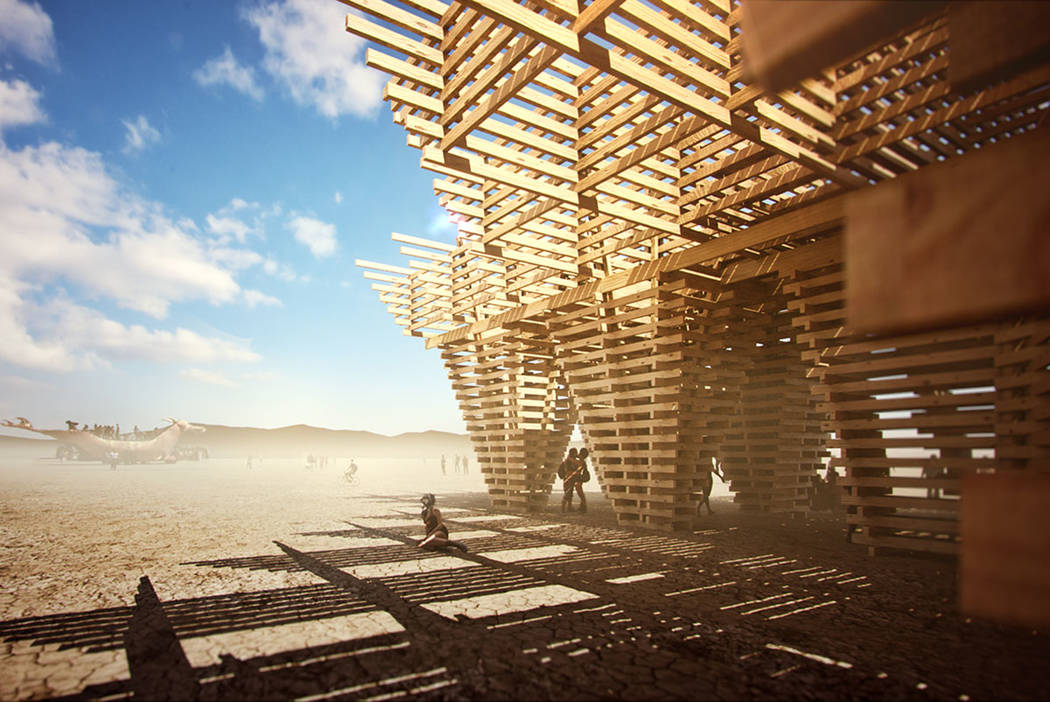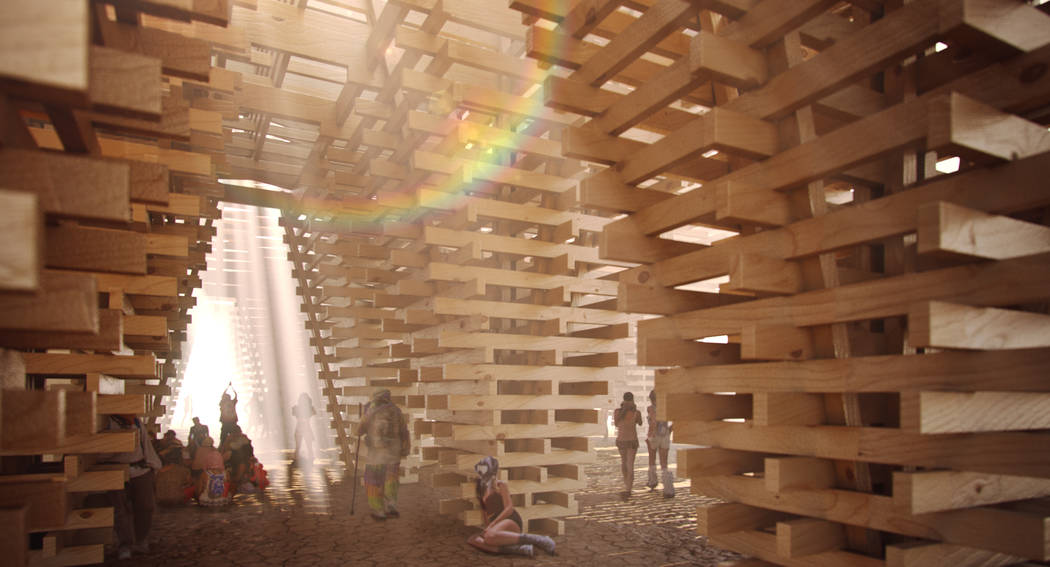Next Burning Man temple may send environmental message









The main temple at this year’s Burning Man festival in the Northern Nevada desert will carry an ecological message in its towering wooden spires and pyramids.
The ephemeral structure, built to be burned at the end of the weeklong counterculture event, is being constructed entirely out of Ponderosa pine trees killed within the past six months by drought and beetle infestation in the Sierra Nevada range in California.
“The idea is to highlight not only the plight our forests are facing but humans’ role in the crisis,” said Steve Brummond, an Oakland, California, architect and artist who helped design the Burning Man temple.
According to the U.S. Forest Service, more than 102 million trees have died across 7.7 million acres of California forest land since 2010. Some 62 million trees died last year alone, more than doubling the number of dead trees across the Golden State and substantially increasing the risks of catastrophic wildfires.
Forest Service officials expect millions more weakened trees to die in the coming years, mostly as the result of prolonged drought, destructive bark beetle outbreaks and other impacts commonly associated with climate change.
But many ecologists also blame what’s happening to forests across the West on misguided fire management practices over the past 100 years. The blanket policy of fighting every fire has allowed forests that once experienced periodic, cleansing burns to become overgrown and vulnerable to high-intensity fires that kill everything, even the older, larger trees.
A powerful donation
Brummond said this is the third Burning Man temple he has worked on and the first with a strong ecological message tied to it.
“This is not just a statement. This temple is literally being built from this material,” he said.
Brummond and his fellow designers came up with the idea after noticing large stands of dead trees during the drive to last year’s festival. “As we were cleaning up the ashes from the 2016 temple we were already sewing the seeds for the 2017 temple,” he said.
First, though, they had to find a ready supply of drought-stricken trees. That’s where the Pacific Gas & Electric Co. came in.
The San Francisco-based utility donated all the wood for the temple out of a much-large stockpile of dead trees the company had cut down to protect its power lines and other equipment. PG&E has an entire vegetation management division just to keep tabs on nearly 150 million trees growing across the company’s 70,000-square-mile service area.
Kamran Rasheed manages a special drought response team within the vegetation management division, and he has seen firsthand the devastation of California’s forests over the past few years. In some areas along the western Sierra, not far from Yosemite National Park, virtually every large Ponderosa pine is dying or dead, he said.
“It looks like a different world to be honest. It’s changing the whole landscape,” Rasheed said.
In 2016, PG&E contractors cut down more than 236,000 dead trees, and the utility expects to remove another 233,000 this year. That’s about seven times the number of trees PG&E had to cut down in an average year before 2014, when the took hold in California.
Destined to burn
Brummond said the finished temple will be 75 feet tall and 140 feet wide, with space inside for festivalgoers to gather, write on the walls and leave offerings. The “cathedral of timbers,” as Brummond and his fellow designers describe it, will be built out of boards milled from more than 200 logs, some of them over 100 years old.
Parts of the structure are now being cut and assembled in a warehouse in Oakland. In August, the pieces will be loaded onto 10 flatbed trailers and hauled to the Burning Man site in the Black Rock Desert, 500 miles northwest of Las Vegas.
This year’s festival is slated to run from Aug. 27 through Sept. 4 and draw between 65,000 and 70,000 people.
The temple will be set ablaze on the last night of Burning Man. Brummond hopes the flames will make a powerful statement.
“Fire is an important, healthy part of the ecosystem,” he said. “We should he burning our forests naturally and more frequently.”
Contact Henry Brean at hbrean@reviewjournal.com or 702-383-0350. Follow @RefriedBrean on Twitter.
Nevada’s trees also take a hit
Forests in the Silver State have also seen an increase in tree deaths, with drought as one likely factor, according to experts from the U.S. Forest Service.
Duncan Leao, forest fuels and vegetation program manager for the Humboldt-Toiyabe National Forest, said he and his crew have seen more trees die over the past year than they did the previous year. “In the Spring Mountains around Las Vegas for example, we have noticed that there has been a huge increase in mortality from fir engraver (beetles) as well as western pine beetle in the Ponderosa pine,” Leao said in an email.
Such bug-related deaths are part of what he called “an interconnected feedback cycle,” wherein trees already weakened by drought or disease are finished off by pests that normally might not kill them.
The Humboldt-Toiyabe is the largest national forest outside of Alaska, covering some 6.3 million acres in Nevada and California.
Using aerial surveys, extrapolation and a rough average of 250 trees per acre, the Forest Service estimates almost 2.3 million trees died last year across the national forest. That includes some 75,000 trees in the Spring Mountains west of Las Vegas, where most of the deaths were attributed to insects.












